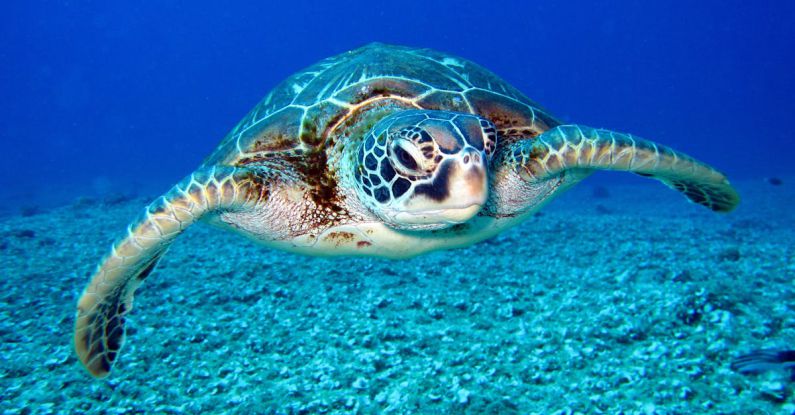Sea turtles are captivating creatures that have roamed the world’s oceans for millions of years. Their ancient lineage and unique adaptations make them a crucial part of marine ecosystems. From their nesting habits to their migratory journeys, sea turtles lead fascinating lives that are worth exploring.
Nesting and Hatching
One of the most remarkable aspects of sea turtles’ lives is their nesting behavior. Female sea turtles return to the same beaches where they were born to lay their eggs, a phenomenon known as natal homing. The process of nesting is a delicate and laborious one, as the female digs a hole in the sand to bury her clutch of eggs. After the eggs are laid, the female covers the nest and returns to the ocean, leaving the hatchlings to fend for themselves.
Once the eggs hatch, the baby turtles must make their way to the ocean, facing numerous threats along the journey. Predators such as birds, crabs, and even humans pose a danger to the vulnerable hatchlings. Only a small percentage of hatchlings survive this treacherous journey to adulthood, highlighting the challenges that sea turtles face from the moment they are born.
Feeding and Migration
Sea turtles are known for their long-distance migrations, which take them thousands of miles across the world’s oceans. These migrations are driven by the turtles’ need to find food and suitable nesting sites. Different species of sea turtles have varying migration patterns, with some traveling to specific feeding grounds while others roam more widely.
The diet of sea turtles also varies depending on the species. Green sea turtles are primarily herbivores, feeding on seagrasses and algae, while loggerhead turtles have a more varied diet that includes crustaceans, mollusks, and jellyfish. Leatherback turtles, the largest of all sea turtles, feed primarily on jellyfish, using their unique adaptations to consume these slippery prey.
Threats and Conservation
Despite their ancient lineage, sea turtles face numerous threats in the modern world. Habitat destruction, pollution, climate change, and bycatch in fishing gear are just some of the challenges that sea turtles must overcome to survive. The destruction of nesting beaches due to coastal development also poses a significant threat to sea turtle populations worldwide.
Conservation efforts are underway to protect sea turtles and their habitats. Marine protected areas, nesting beach monitoring programs, and efforts to reduce bycatch in fishing gear are all crucial steps in ensuring the survival of these magnificent creatures. Public awareness and education also play a vital role in promoting the conservation of sea turtles and their habitats.
A Brighter Future for Sea Turtles
Despite the challenges they face, there is hope for the future of sea turtles. Conservation efforts have helped some populations recover, demonstrating that with the right interventions, it is possible to reverse the decline of these iconic marine reptiles. By working together to protect sea turtles and their habitats, we can ensure that these ancient creatures continue to roam the world’s oceans for generations to come.





